Create a leafy habitat for wildlife
“Leave the leaves” on the ground in fall to shelter wildlife in winter is a common refrain. But is it possible to keep your thoughtful choice to help nature from becoming a thorn in your neighbours’ side whenever the wind blows? And what about your lawn — does a blanket of leaves do it any harm? Should you mulch up the leaves or leave them whole?
Let’s dive deeper into this pile of leaves.
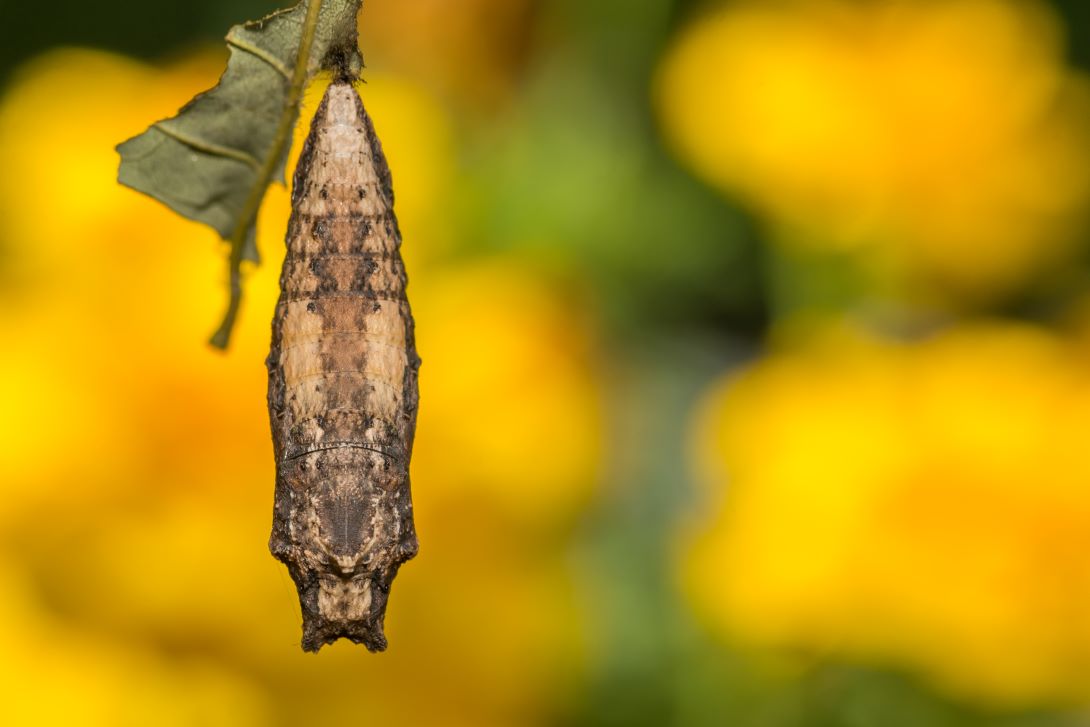
Life in the leaves
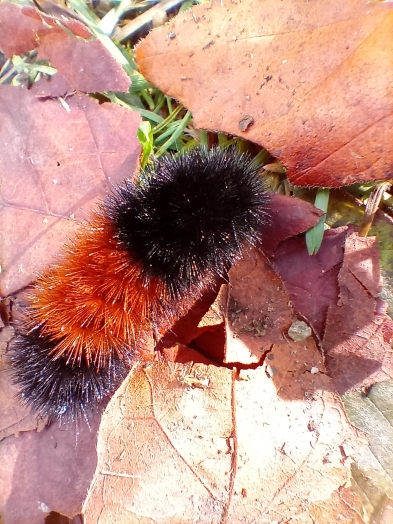
First off, leaving any number of leaves on the ground over winter will help wildlife. Fallen tree leaves make the ideal winter habitat for many pollinators and other insects, including butterflies and moths, which may overwinter as winged adults, pupae (cocoons or chrysalises) or as larvae (caterpillars). Across southern Canada, the adorable orange-and-black banded woolly bear caterpillar seen in fall, the larval stage of the Isabella tiger moth (Pyrrharctia isabella), spends the winter nestled in the leaves. The mourning cloak butterfly (Nymphalis antiopa) does the same as an adult and is one of the first butterflies you’ll see flying around in spring.
Their fellow insects, bumble bees, also depend on a layer of leaves — bumble bee queens burrow beneath the leaves, a few centimetres underground, to stay snug through the cold seasons. Snails, beetles, spiders and many other important members of ecosystems also rely on a leafy hideaway for protection from winter’s chill. This is why you shouldn’t mulch up your leaves (e.g., with a lawnmower) if you’re leaving them for wildlife — you’ll mulch up the wildlife, too!
Plusses for plants
In addition to sheltering wildlife, a leaf layer insulates your sleeping perennials (the plants that grow back year after year), giving them the best chance of coming back strong in spring. And as leaves decompose, they release carbon, nitrogen and other nutrients back into the soil where they can nourish the plants as well as beneficial fungi and other microorganisms.
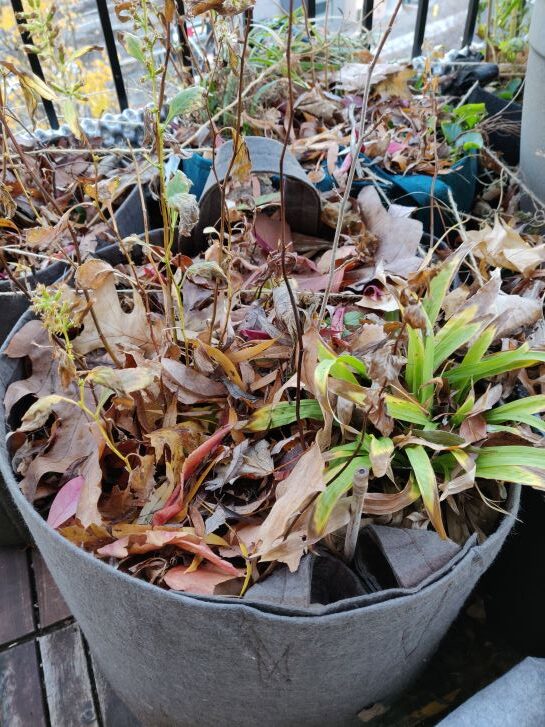
Where and how thick?
Naturally, you don’t have control over where leaves fall and it might not be ideal to leave them where they are. Keep storm drains and hard surfaces (driveways, patios, decks, etc.) clear to prevent flooding and the slipping hazard of wet or frozen leaves.
If you have turfgrass lawns you’d like to keep green and healthy, limit the depth of leaf coverage over those areas to less than 15 centimetres; a thicker layer can completely block out sunlight in fall and early spring and reduce lawn health. On the other hand, if you’re looking to kill your grass and replace it with native plants next year, a thick leaf layer can help with that!
Garden beds and container gardens, whether for flowers or vegetables, are great places to layer up your leaves. You can rake your leaves from other areas to cover up these spots. Leave the dead plant matter (stems, leaves, seed heads) where it is and cover the garden with a thick layer (up to 40 centimetres or even more) to “bed it down” and keep the plants insulated from the cold over winter. You can pile leaves around the bases of trees and shrubs as well, to insulate their roots.
Take note of the location and thickness of your leaf layers going into winter. Then, next spring, check to see how this impacted your plants. If your plants come back healthy and green, you can repeat your bedding-down process the same way next fall. If your plant stems look white and curly in spring, you’ll know your leaf layer was too thick and you can adjust accordingly next time.
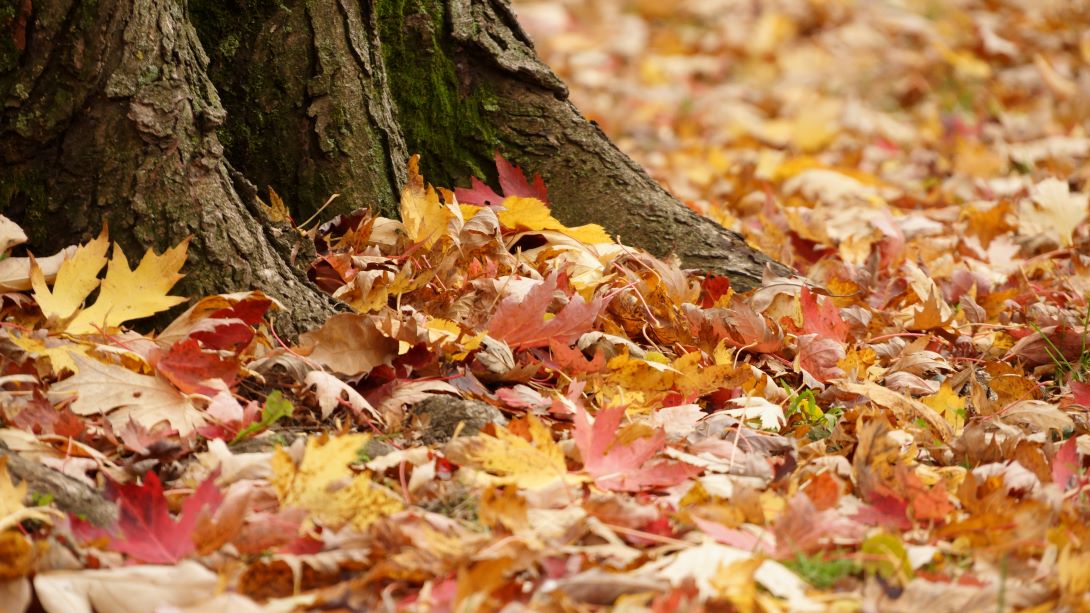
Leaves to get rid of
You may find some leaves you don’t want to keep around: diseased leaves. If the tree or plant shedding leaves looks sick — or if you see leaves that have black, brown or yellow spots, or are curled — dispose of those leaves in yard waste bags or burn them, according to the rules in your community. Removing these leaves is important to prevent disease from spreading to other trees or plants.
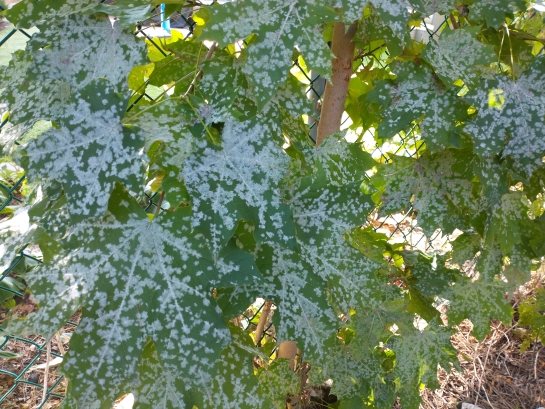
What about wind?
To keep your leaves where you want them, place some fallen or pruned sticks or branches on top to weigh them down. Another method is to erect deer or snow fencing around the area where you want the leaves to be contained. Avoid covering the leaves with an impenetrable barrier; make sure that moisture, air and light can still get at the leaves and help them break down.
What else can I do in fall to help wildlife?
Fall is the perfect time to leave plant stems and seed heads in place to provide food and shelter for wildlife in winter; harvest, sow or share native plant seeds; or start making plant-nourishing compost from your excess leaves. Learn more by visiting re:grow, our how-to hub for helping to restore wildlife habitat by growing native plants.


